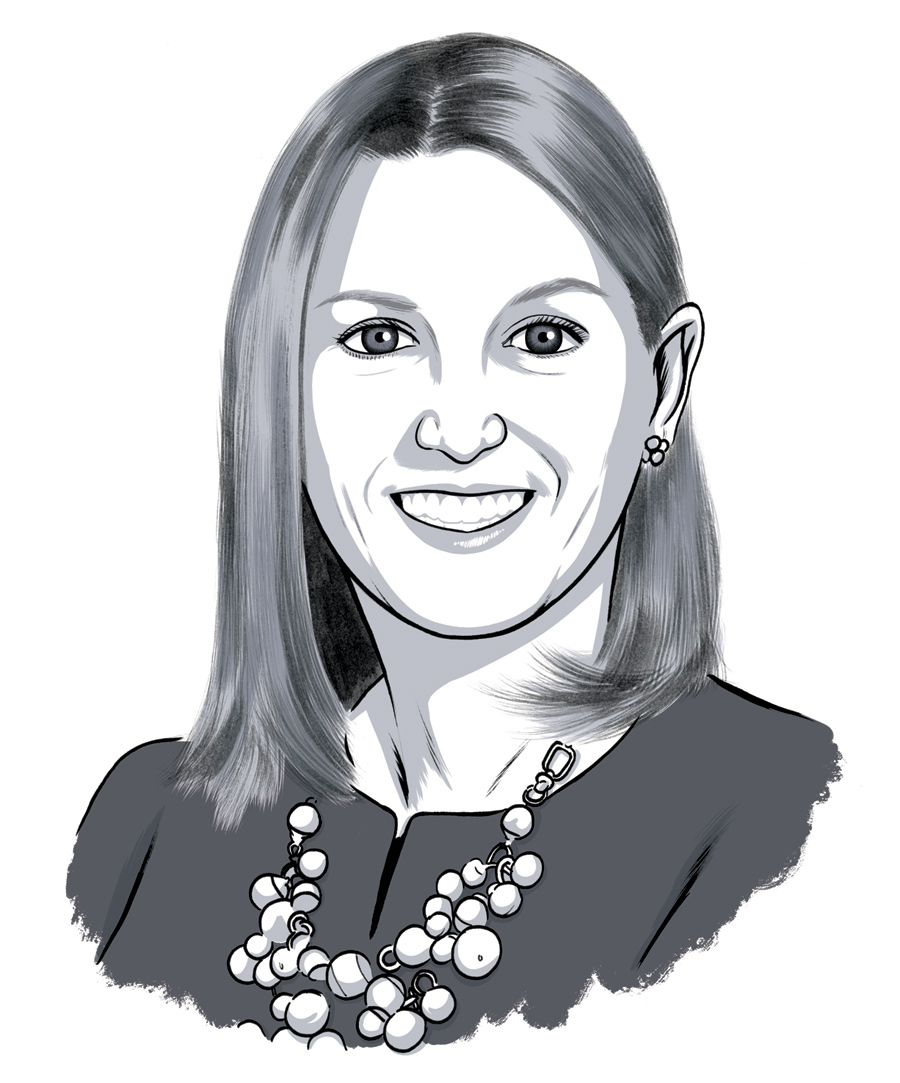

Illustration: Joel Kimmel
Lisa Keegan
Shifting Strategies
by Sherri Kimmel
Lisa Keegan, Bucknell’s new vice president for enrollment management, arrived this summer from North Carolina’s Elon University, where she served in various roles for 17 years, lastly as assistant vice president/dean of undergraduate admissions. Bucknell’s strategic plan for 2025, in which building and sustaining a diverse community is a core commitment, was a key attraction. “Enrollment work is critical in expanding diversity and making sure that students of all backgrounds have a pathway to a Bucknell education,” she says.
Q: How have your recruitment efforts changed during the COVID-19 era?
We have developed a lot of virtual options, including Zoom meetings [with students, families and college counselors] and a virtual campus tour to help students and families feel connected to Bucknell. It’s allowed us to connect with students more broadly and reach them in places where we may not have traveled before. And I think that’s something that we’ll carry forward in our recruitment strategy.
Q: Recently Bucknell launched a virtual reality experience for prospective students. How did that come about?
During my first week on the job, I had a call explaining that we might have an opportunity to explore a virtual reality project, thanks to the generosity of Marc Lore ’93. It speaks so much to the Bucknell community to see that level of investment, creativity and innovation in thinking about new ways that we can reach prospective students. We’re one of the only schools that has anything like this, and it will give us a competitive advantage. Students can have this innovative, creative first glimpse at what a Bucknell experience can be — all through virtual reality. It allows students to learn about different aspects of Bucknell in a way that they choose, whether they have a VR headset or not. It’s a fun, innovative way for them to learn about a college campus.
Q: Bucknell moved to a test-optional policy for applicants in fall 2019. Is that something you’d like to continue?
Yes. Having that policy in place before COVID hit set the University up well to navigate the pandemic. High school students right now are having more and more difficulties accessing standardized tests. It’s so important that we are not putting extra stress and pressure on prospective students and creating additional barriers for them. And while the COVID-19 barriers may dissipate, there are still barriers to standardized tests, so I hope that that our pilot phase will continue well beyond [the five years planned] and then we’ll have data and statistics to support its efficacy.
Q: For more than 10 years there has been talk about the coming dearth of students in the Northeast. Is that something that concerns you?
It’s what many are calling the enrollment cliff. We’re watching closely what’s going to happen in the next 10, 25 years, but right now, we’re actually seeing a slight increase in high school graduates across the United States. We will start to see a significant decrease beginning in 2025, and some of the shifts are already coming in certain regions of the country. We are seeing a little bit of an erosion in the Northeast. Bucknell isn’t feeling that quite yet. But it’s something that we are developing a strategy for — to expand our recruitment footprint to make sure that we can continue to attract a broad applicant pool to the University.
Q: Bucknell has made a commitment to increasing its financial aid budget. Why is that so important?
It’s so critical because it helps keep the doors open to as many students as possible. And we want students of all backgrounds to have an opportunity to come here and be transformed.
